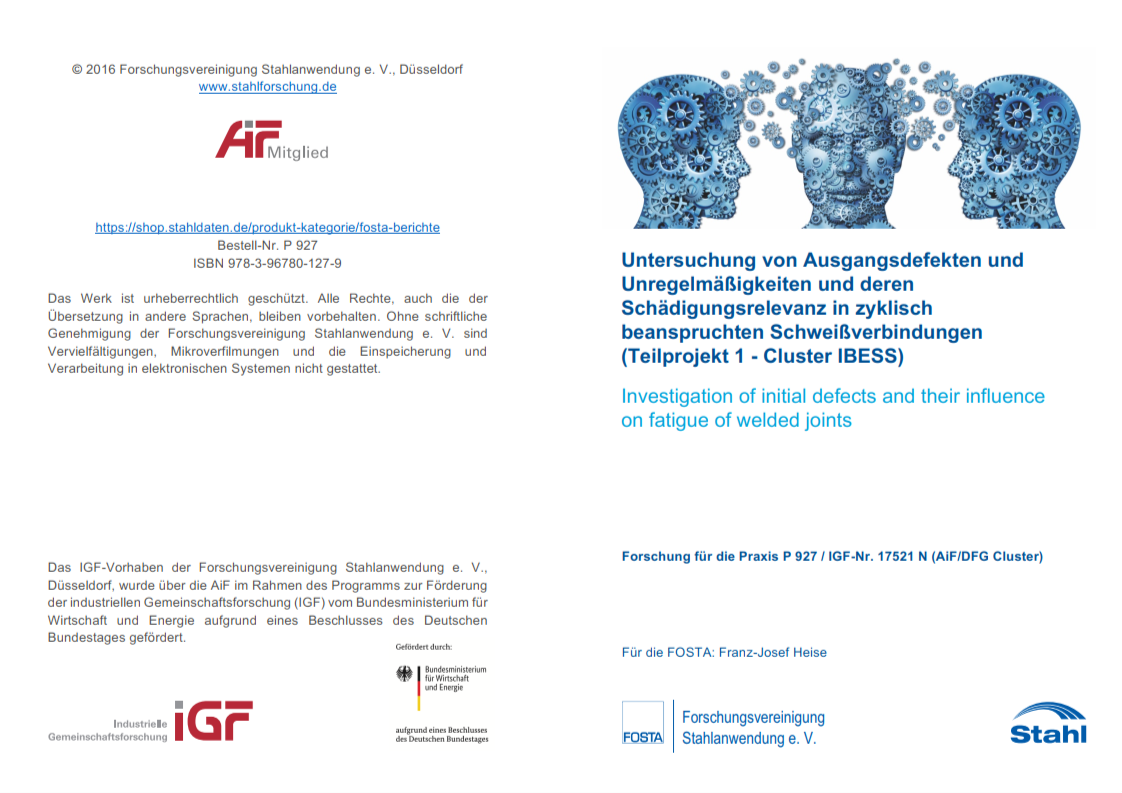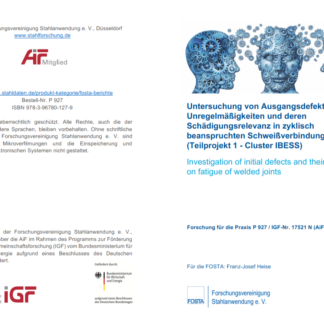Description
P 927 – Investigation of initial defects and their influence on fatigue of welded joints
The research project 17521 N was part of the research cluster IBESS (subproject A1). IBESS was initiated to develop an analytical fracture mechanical model to determine the fatigue strength of welded joints. Fracture mechanical analyses assume an initial crack. In welded joints cracks are not necessarily existent, but they can, for example, be initiated from sharp surface or subsurface imperfections. Imperfections which lead to crack initiation are called initial defects. They can be used as initial cracks in the analyses.
The focus of subproject A1 was on the systematic recording and quantitative descrip tion of imperfections and initial defects as well as on their local distribution in repre¬ sentative welded joints. The imperfections were measured at metallographic sections. The initial defects should be detected by fractographic investigations and the resulting chanic configurations conceptof. Furthermore initial defects, material should be properties used as input were for determined the analytical and fatigue fracturetests performed. In addition, sensitivity analysis regarding material parameters, initial defect size and parameters of the analytical fracture mechanic model (subproject A3) were conducted.
For most specimens no initial defects were found via fractographic investigations in a scanning electron microscope (SEM). Therefore, no initial defect size caused by imperfections can be used as input for the analytical fracture mechanic concept. An alternative approach was developed. For this a cyclic R-curve concept was applied to specify lower bounds of the initial crack size. The sensitivity analysis with the IBESS-Model has shown that secondary notches (roughness, undercuts), large weld toe radius and opening angles have a great influence on life time. The results of this subproject and the complete research cluster will be used to increase the performance ratio of materials, to save resources und hence reduce costs and C02 emissions.
Published in:
2016
Authors:
Prof. Oechsner




